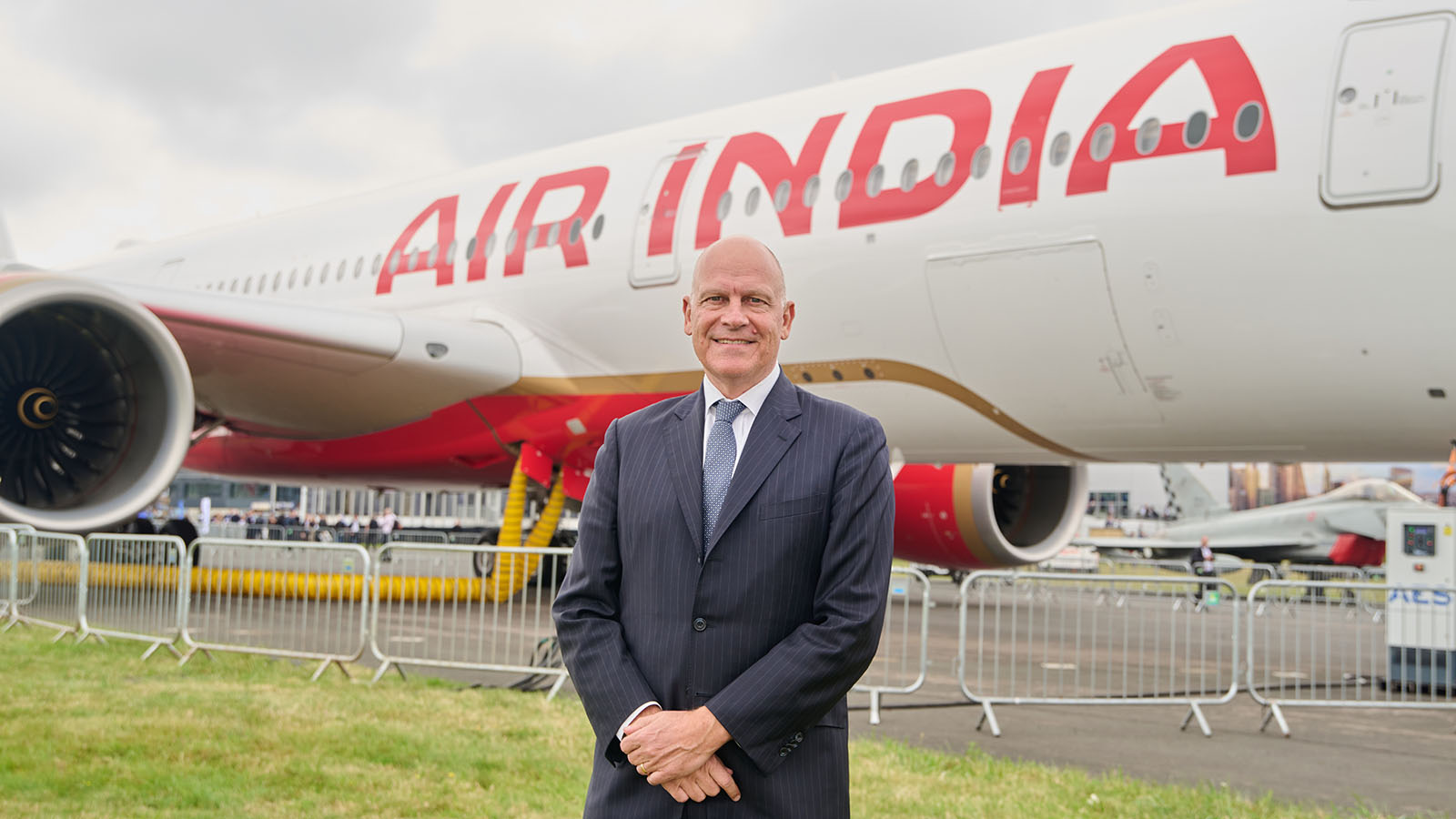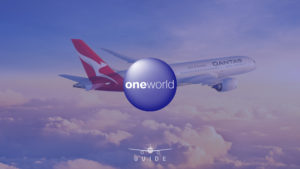Air India sets its sights on Australia for growth
Air India's CEO and MD Campbell Wilson flies into Brisbane, where we catch up for a chat.

What we'll be covering
EXCLUSIVE INTERVIEW | Air India is in the midst of an ambitious transformation. Last year, the carrier placed one of the largest aircraft orders in aviation history for 470 new jets from Airbus and Boeing. For context, when delivered, the new planes alone would make Air India’s fleet larger than the size of Cathay Pacific and Emirates today, combined. And with many goals to achieve, one of Air India’s aspirations is to grow significantly in Australia.
Currently, the airline offers nonstop services from Delhi, its largest hub, to Sydney and Melbourne. In late 2023, the carrier launched direct Melbourne-Mumbai flights as well. As Air India gets more of those new aircraft, other Australian routes and increased frequencies of existing services are also on the cards. But that’s not all.
Air India is in the process of rolling out new cabin products as part of a $100 billion investment in passenger experience. The goal? To become renowned as a tier one, world-leading airline. In fact, in Australian skies, discussions are also underway with Virgin Australia: exploring ways in which the airlines could ‘cooperate’.
With so much on the horizon, I catch up with Campbell Wilson, Air India’s Chief Executive Officer and Managing Director. Previously, Wilson worked as the founding CEO of Scoot and as a Senior Vice President at Singapore Airlines. Over the years, we’ve crossed paths in places as far-flung as Seattle and Toulouse – not to mention Singapore. This time, Wilson is in Brisbane for the CAPA Airline Leader Summit, where we settle in for a chat on the event sidelines.
Westpac Altitude Rewards Black

Air India’s Australian destinations: Sydney, Melbourne, and then..?
When it comes to Australia, Air India is ‘only operating to Sydney and Melbourne, and only 17 times a week,’ the ever-ambitious Wilson remarks. ‘We’ve doubled our frequency in the last two years,’ but evidently, Air India’s goals are many magnitudes larger.
‘Clearly, there’s a huge amount of opportunity to grow. Not just in terms of frequency, but certainly in respective city coverage.’ When speaking about possible future Australian destinations, Wilson remarked, ‘I think you could name it, it would be no secret, right?’ All while looking around the walls of the conference room in Brisbane with a smile.
I take the chance to ask about Brisbane specifically, as well as Perth. Both are ‘certainly in the consideration set,’ Wilson affirms. As for Sydney and Melbourne, back when Air India first launched these services, they ran as a triangle. That is, Air India would fly into one Australian city, operate a domestic tag to the other city, and then fly back to India from there. The domestic tag could only carry passengers flying to or from India – not domestic-only flyers.
Airlines do this to help grow two markets at once, with one aircraft. But usually when demand strengthens, the triangle is uncoupled and flights for both cities run non-stop in each direction. That’s exactly what Air India has done with Sydney and Melbourne in the years since launch. Asked whether future Australian expansion might require a return of the triangle method, Wilson is clear. ‘It makes a lot more sense to go point to point with new routes.’
The challenge of boosting Air India’s flights into Australia
Air India seems to want to achieve a lot in the Australian market. So what’s preventing the airline from growing significantly in the short term? ‘It’s driven by the pace of aircraft deliveries,’ Wilson shares. ‘As soon as we get (more) aircraft, we would like to put more into Australia.’
But Australia is just one of the markets that Air India serves. ‘There are many competing markets for these aircraft, whether it be Europe, Asia…’ In other words, Australia is of strong interest but isn’t necessarily right at the top of that list.
‘Australia is ranked in the top three markets (that) Indians want to travel to. There’s plenty of untapped potential from a non-stop perspective, and so we can’t wait to put more capacity. We see significant opportunity.’

Partners on the ground in Australia
In terms of local connecting traffic, Air India doesn’t currently have an Australian partner airline. That’s a result of circumstance, with Air India belonging to Star Alliance. Unlike the oneworld Alliance, of which Qantas was a founding member, Star Alliance doesn’t have a domestic presence here. Instead, Air India maintains simple ‘interline’ agreements with Qantas, Virgin Australia and Jetstar.
These agreements are not codeshares, and they don’t extend to frequent flyer benefits. They merely allow flights on the two airlines to be booked on a single ticket. And for baggage to be tagged and transferred from one airline to another, where airport circumstances permit.
In this respect, Air India recently reassessed its membership in Star Alliance. ‘We spent the first couple of years of this transformation really doing a clean sheet approach as to what alliance do we want to be in within the (various) alliances? Who are the partners we want to work with?’
‘We’ve settled that Star Alliance is where we want to be,’ Wilson affirms – so there’s no change on that front. But ‘outside of alliance coverage, are there any other (airlines) that we feel can add value?’ Wilson elaborates, ‘Virgin Australia clearly fills a white spot in the Star Alliance network, and so there’s no secret in the fact we are talking about how we might cooperate better. I’ve got nothing really that I can say substantively about what might happen.’
Clearly, watch this space.
Air India’s appeal to long-haul travellers
With Air India’s rival Qantas also flying directly between Australia and India, competing for Australian travellers isn’t without its challenges. It’s fair to say the current Business Class seats on Air India’s Australian routes aren’t helping in that regard. But Air India is on a mission to change that.
In 2023, Air India unveiled new cabin interiors that would be progressively rolled out across its long-haul network. While there were some delays in getting them flying, the new products have begun to appear on selected routes. Here’s a look at what Air India offers on those upgraded planes.
Aircraft with the new cabin products fitted are ‘currently doing double-daily Dehi-London,’ Wilson shares. ‘We’ll do Delhi-New York by the end of the year.’ The airline’s Airbus A350 will appear on Delhi-JFK flights from 1 November 2024, and on Delhi-Newark flights from early January 2025.
‘That will consume all six of the aircraft we currently have for the A350s,’ which are fitted with the new product. ‘We also have 11 Boeing 777s in a modern, but not our latest, configuration. They’re serving some North American points, particularly New York and San Francisco and also Heathrow from Mumbai.’
That said, Air India uses Boeing 787s on its routes to Australia. These aircraft haven’t yet begun with refits of Air India’s new seats. By extension, Aussie travellers must wait a little longer to experience the new Air India.
‘The refit of the 787s was originally slated to commence this year. Because of the production and certification delays of some seat suppliers, that process has been pushed back into starting in 2025. So, throughout the course of 2025 and 2026, all of the legacy 787 and 777 fleet will be upgraded to the same standard as our A350s. And during that period is when the Australian market will see them.’
Smoother transits are also key
Another challenge for Air India has been the transit process through India’s airports. For instance, when passengers connect between domestic and international flights or from international to international. Having more passengers doing the latter presents significant growth opportunities for the airline. Particularly so, Air India is increasing its share of passengers flying from Australia to places further afield, like the UK and Europe.
‘There’s a geographical opportunity for international to international,’ Wilson highlights. But facilities on the ground to help facilitate this take time to grow. Part of the challenge had been ‘airports; part of it is government. And I think we’ve got to give both of them a little bit of a leeway here. Air India of the past wasn’t pursuing international connecting traffic in any significant way.’
‘There wasn’t really another carrier in India to speak of that was doing that. And if people talked about it, they didn’t last long enough to actually manifest. So as an infrastructure builder or a regulator, you didn’t have someone saying, please do this because that’s then going to facilitate something else.’
‘So we see now, if you go to Mumbai Airport, they’ve done quite a lot of work to completely reconfigure the physical infrastructure to facilitate domestic to international travel. Delhi’s done something similar, albeit with some genuine constraints. We see government understanding that this is now something to make easier, but there’s obviously a process they need to go through from a regulatory as well as technical perspective.’
‘But there’s an alignment now because there’s now consistent strategic direction from Air India saying that this is what we are going to need for us to be successful, which will also make you successful.’
Improvements to Air India’s premium ground experiences
Another sticking point for some has been Air India’s lounges. Having experienced the airline’s old lounges in Delhi, I’m delighted to hear that ‘we have currently closed the international lounge in Delhi for complete rebuild. That’ll open next year.’
‘We’ve opened a new airport lounge in Bangalore. Mumbai, we have an exclusive area of an existing lounge, but the airport operator is not yet of a view to give an airline exclusive lounge.’ Elsewhere on its network, Air India largely contracts the lounges of its Star Alliance and other partners, along with independent operators. One notable exception is at New York JFK, where Air India operates an own-brand lounge that it plans to redevelop significantly.
However, as for the cities closer to home that are not yet on Air India’s route map, Wilson has one final thought. ‘I think in Australia, New Zealand… whatever large city you’re talking about, it’s probably more a matter of when, not if, there’ll be an Air India presence.’
Also read: Inside Air India’s $100 billion project to become a ‘premium global airline’
Featured image courtesy of Sarah Keayes/The Photo Pitch via Air India. Chris Chamberlin attended the CAPA Airline Leader Summit in Brisbane as a guest of CAPA Centre for Aviation.
Stay up to date with the latest news, reviews and guides by subscribing to Point Hacks’ email newsletter.





Currently trying to understand the visa requirements and expensive cost when travelling by ship between ports in India before heading to Sri Lanka.
Navigating a visa for cruise passengers is a nightmare ask any of the 53 in my group.
If Air India had any relationship with the Indian government it would suggest that Visa waiver for australian passport holders, would increase traffic ten fold.